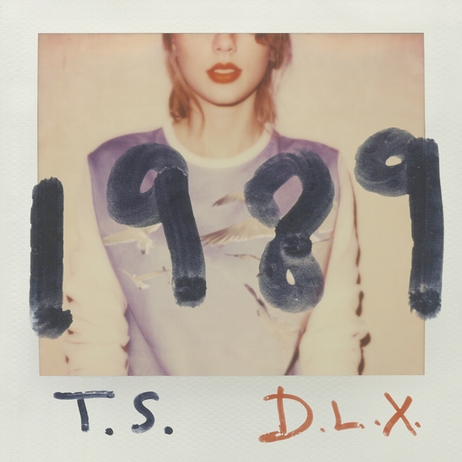 ***UPDATE: Google To Launch Music-Streaming Service (Market Watch, May 14, 2013). This could be a game-changer, as Google is a major infrastructure challenger to Apple. Also missing from my analysis below is Amazon, who could also become a major player, and does have a cloud-based music storage system today.
***UPDATE: Google To Launch Music-Streaming Service (Market Watch, May 14, 2013). This could be a game-changer, as Google is a major infrastructure challenger to Apple. Also missing from my analysis below is Amazon, who could also become a major player, and does have a cloud-based music storage system today.
***UPDATE: Apple announced a streaming music service on September 7, 2012, causing Pandora’s stock to fall precipitously. The impact of this service, which was also reported by the Wall Street Journal, is likely to be profound, although EricA Ogg of GigaOM speculates on whether Apple will succeed in this space given the relative lack of visibility of iMatch.***
It’s fall, the season when fruit ripens and leaves let loose and tumble to the ground. As I was walking my dog this morning, I was reminded of the stark difference between fruit and leaves. One is sweet and ripe, heavy with the burden and promise of life. The other, cast off like snakeskin, is the detritus of the season, dry and lifeless.
It’s the fall season in the music software industry as well. Every software business has predictable cycles for startups, and the music industry software startup cycle is no exception. The clock is ticking, and some music software businesses seem on the road to becoming lifeless, a step from being cast off from their investors like so many drying leaves. It’s not clear if any will bear the fruit – the financial returns – their investors were hoping for. It’s hard not to take as a warning the fact that projected 2012 Facebook revenues were downsized by $1B . Even this relatively successful consumer software platform continues to struggle to generate return on investment. Also in news this week, TuneCore founders Peter Wells and Jeff Price were ousted by the Board (read: major investors in the company take the reins, looking to change company direction to increase profitability). Slightly older news is that Spotify and Pandora are not yet close to profitable as of mid year 2012, and in fact, Spotify profitability appears to be moving in the wrong direction. Rhapsody was revived by absorbing Napster in a buy-in from Best Buy, and they are still owned almost 50% by RealNetworks, so theoretically they have deeper investor pockets. They are supposedly close to profitability, but their revenue and cost structures are less well understood. I’ll believe it when I see the numbers.
I read a great article today by Don Sears on the CNN Money/Fortune website entitled “Why the online music industry is a mess” that concisely outlines the problems with the financial model in the music industry as it currently stands – problems that, arguably, mean these music software platforms may never become profitable. As Dan explained, platforms like Spotify and Pandora continue to do little more than collect investor dollars with one hand and pass them along to the major labels with the other. Musicians are making less and less, both big-name and independent, yet they continue to generate the content that drives this dysfunctional music revenue cycle. The musicians are the engine of creation that keeps this model afloat, but I still believe it is unsustainable for much longer. To me, it’s clear that in time, something must give. I think it is the music software platforms that will implode first and bring the whole thing crashing down. They do not have the deep pockets of the labels or the diversified business models of integrated software platform businesses like Google, Microsoft, or Apple.
Despite ad revenue and subscriber growth for Pandora and Spotify, the fact is that the licensing fees paid to the labels grow in lockstep. So both infrastructure and licensing costs continue to rise as their subscriber base increases. There is no economy of scale in a cloud-based subscriber services model – in fact, I would venture to say that cost per subscriber may even rise as numbers (and system complexity) increase. To me, this says there is no clear path to profitability for these companies. It’s a situation that can only end with a few scenarios:
- the revenue model has to change – not happening because consumers are not willing to pay more for music
- the cost model has to change – not happening because the licensing structures are contractual
- these companies will be acquired by a larger platform with deep pockets for whom they fill a critical puzzle piece – possible
- or they will die. Like MySpace.
So who is harvesting the sweet juicy fruit this fall – who is making the money? The labels continue to bring in the most revenue, at least for now. Their number one source of revenue: iTunes. Their number 2 source of revenue is Spotify. You would think Apple would be a profitable entity in the digital music distribution model, but no. It makes its money from hardware sales, not content (music) sales. Apple now makes half its revenue on the iPhone, which reportedly has a 60% profit margin, and the majority of the remainder on Macs and other hardware. iTunes revenue is under 6%, and profitability is probably negative, making it a cost, not revenue center for the company. It was Steve Jobs’ vision that music would be a silver bullet of kinds, the content that would sell the iPod (and now iPhone) hardware, hardware with the elegant user interface that Apple was so good at designing. It was his incredible business savvy that made iTunes happen, but it was part of an integrated hardware/software business model. Reportedly Apple makes only a dime on every 99 cent transaction on iTunes, hardly enough to sustain the massive infrastructure costs they must incur. Even though Jobs is no longer there to push the vision, Apple continues to fund iTunes as a loss leader in order to sell their hardware, and so the model has been established. It’s the opposite of the razor and the razor-blades model, because Apple actually makes a ton of money on the device purchase (the razor), and sells the razorblades (the music) at below true cost, at least when looking at the iPhone as an integrated music distribution platform. Since mobile is increasingly the platform of choice for digital content of all kinds, it seems reasonable to assume the Apple model, which is stable today, can continue to be stable – at least for any entity that bundles the hardware and the content/service that is music. That is the key – music is the free (or very cheap) content that drives device sales.
Which brings me to the discussion of mobile and its role in the un-virtuous circle of the current music consumption model. There is no question in my mind that mobile is the future of music, as mobile will increasingly dominate how most electronic content (at least for end consumers) is purchased and consumed. Sears also makes the connection to mobile as the savior of the music business at the end of his article, making a case for the bundling of music services with phone services as a $10 add-on, a la Muve.
To understand mobile a bit better, I attended a great talk on Tuesday by a former colleague of mine, Charlie Kindel (former General Manager in the Windows Phone division at Microsoft), on the future of mobile. It’s important to understand that the mobile business is just like the music business – many dependent players, with different “DNA” (as Charlie calls it), and different revenue models. Each node of the mobile business (hardware, content providers, infrastructure, etc.) has different strengths, but the cycle works because no single node dominates profitability.
Charlie gave a fantastic talk, but the most stimulating discussion I had was with another attendee before the talk even started. This guy sat down next to me, we got to talking, and it turned out we used to work together a long time ago in the software business. I mentioned music, and he revealed that he was a veteran of the music industry startup space, which is littered with skeletons, large and small. He was a founder of iLike, a social music discovery service purchased by MySpace for $20M in 2009, and he served as a VP there until his departure from MySpace in 2010. What he said put it all in perspective, and dovetailed neatly with the CNN article. He was actively involved in negotiating licensing deals with the major labels, and his insider perspective confirmed many of the things I have read elsewhere about how weird the financial models are in this industry. In order to enter the US market, Spotify had to agree to outrageous and onerous distribution terms with the major labels:
- In the Spotify licensing deal, each label gets most favored nation status, so none can get more than the other in royalties
- Each label cannot (by contract) be paid less than what they were paid in 2010. Ever. Regardless of what the actual consumer numbers are. So revenues for the labels can only ever go up or stay static.
- Since most of Spotify’s money goes to the labels to pay for their access to the major libraries, Spotify has little money left over to pay to indie artists, practically insuring that the platform will remain a slave to the major label content.
We talked a bit more about the weird dynamics of the current business, and agreed that it’s not sustainable for all the players but the labels. And ultimately, the model won’t work for the labels, because it will implode at the service provider node as streaming consumption increases.
Streaming music service providers are screwed because
- They can’t raise prices because consumers have so many choices and substitution costs are so low (music is cheap or even free, when pirated).
- Their infrastructure costs are rising as they acquire subscribers.
- The labels have big lobbies in Washington, so it’s unlikely government regulation will create a better compensation model, in fact, it will most likely continue to support the existing one.
- They are bound by their contracts as outlined above.
Artists are screwed because
- There is a never-ending stream of naive artists standing in line, willing to sign with labels and provide them with the next commercial hit.
- Artists are unlikely to boycott the labels because those who are already signed are locked into financial dependency by their contracts, and those who are not yet signed are blinded by the myth that labels will make them rich and famous.
- Artists are hard to organize, so a concerted effort to boycott labels will fail
- Big name artists are not making money from licensing revenues anyway. They are making their money primarily by touring (merchandise, fees), but even there, the monopolies held in this model means large chunks of the revenue stream go to promotion and ticket companies, and those deals are pretty locked in as well. 360 deals many artists signed mean labels get much of this revenue as well. The labels essentially pimp them out, allowing them enough revenue to keep them somewhat happy.
Ultimately, the labels are screwed because
- Everyone hates them, because they are perceived as keeping the industry back, actively sabotaging a new digital business model based on subscription and streaming services
- Their core competence as an industry is writing business contracts and initiating lawsuits, not creating software, and the new world of music is software-based
- Independent labels are increasingly competing for talented artists and poaching each others’ employees
- They want all the revenue they can get, because they see their boats sinking, and don’t seem to be able to envision a stable business model for music where enough money is made by the constituent players so that everyone can stay in business
In my eyes, the only foreseeable future is one where a diversified, tech-savvy software (and hardware?) platform provider like Apple, Microsoft or Google takes over, and someone as forceful as Jobs has the balls to stand up to the labels, or maybe, eventually musicians will get wise and refuse to make new music… (as if).



2 comments
What can I say…? You are right and it is painful ….
Regards
Guillermo
(singer-song-writer)
Wow mind blowing,.